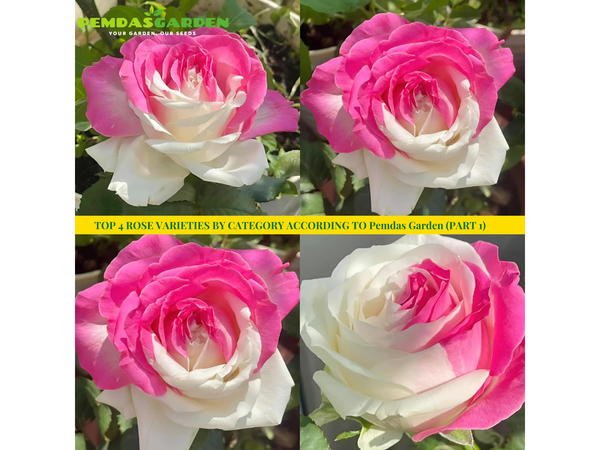Care and fertilization for vibrant colored flowers

The color of flowers is determined in the following order: Plant health (free from diseases, adequate nutrition), sunlight, temperature. Roses display beautiful and standard colors when the plants are healthy, receiving 5-8 hours of sunlight per day (some varieties may require less), and experiencing a cool temperature fluctuating between 18-25 degrees Celsius. In hot and sunny climates, roses may appear paler than their standard color. However, we can still improve the color intensity by focusing on proper care, especially through a well-designed fertilization regime. To enhance the color intensity of roses, Pemdas Garden pays attention to the following factors during plant care (assuming the plants are healthy and growing normally):
1. Sunlight
Each type of plant has specific sunlight requirements. For example, cluster flowers, small blooms, and drooping branches may require less than 3-4 hours of sunlight. Understanding the sunlight needs of each type helps find an appropriate location for the plant to thrive and produce flowers with standard colors.
2. Fertilization
Supplementing with fertilizers rich in nitrogen and potassium, such as Bat Guano, when the plant is budding. As the buds grow larger and prepare to bloom, additional supplements like soybean, eggs, and bananas are provided. When the plant receives the right balance of nutrients, it becomes healthier, leading to more vibrant flowers.
Note:
- Fertilize evenly and sufficiently throughout the plant's growth, as a healthy plant forms the foundation for the best flower color. Chlorophyll in leaves plays a role in synthesizing pigments. To prepare adequately for the flowering phase, it's essential to evenly supplement trace elements during the bud formation stage to ensure the thickest chlorophyll layer. Potassium stimulates the biochemical reactions in plants, promoting thicker leaf structures, making it crucial during bud formation. However, potassium supplementation is most effective when the plant has already received sufficient nutrients for leaf and root development.
- Fertilize in moderation; excessive fertilization is more dangerous than a deficiency. Overuse of potassium-rich fertilizers (such as potassium, bananas) leads to the accumulation of unused amino acids in plants, with the excess forcing soil microbes to work harder for decomposition. However, the decomposition process requires oxygen, leading to an oxygen deficiency in the soil, inhibiting metabolic exchanges and potentially stunting bud growth.
3. Pruning
Limit pruning when the plant is preparing to bloom. At this stage, the plant is directing its energy towards nurturing new blooms. Pruning not only depletes the stored nutrients in the stem but also forces the plant to redistribute nutrients to the newly pruned branches, serving the purpose of healing the wounds. Therefore, pruning at this time may impact the quality of the flowers.
OTHER NOTES:
1. When the plant reaches a certain size and is healthy, it will produce flowers with standard form and color if its needs are met. If the plant is too small or has diseases, regardless of good care, the likelihood of flowers having standard form and color is minimal. Therefore, when the plant is still small or diseased, it requires care, treatment, and patience.
2. Each flower type has different characteristics and nutritional requirements. To have the most suitable care regimen for each type, constant monitoring of the development of each plant is necessary for appropriate adjustments based on the plant's needs and preferences.
We hope that by patiently understanding the characteristics of each rose variety in the garden, caring for roses will be as easy as we think. Thank you for following and supporting Pemdas Garden. We wish you a healthy and vibrant rose garden.
#Fertilizing_for_vibrant_flowers
#Banana_solution_for_roses
#Banana_solution
#Potassium_supplementation_for_plants









